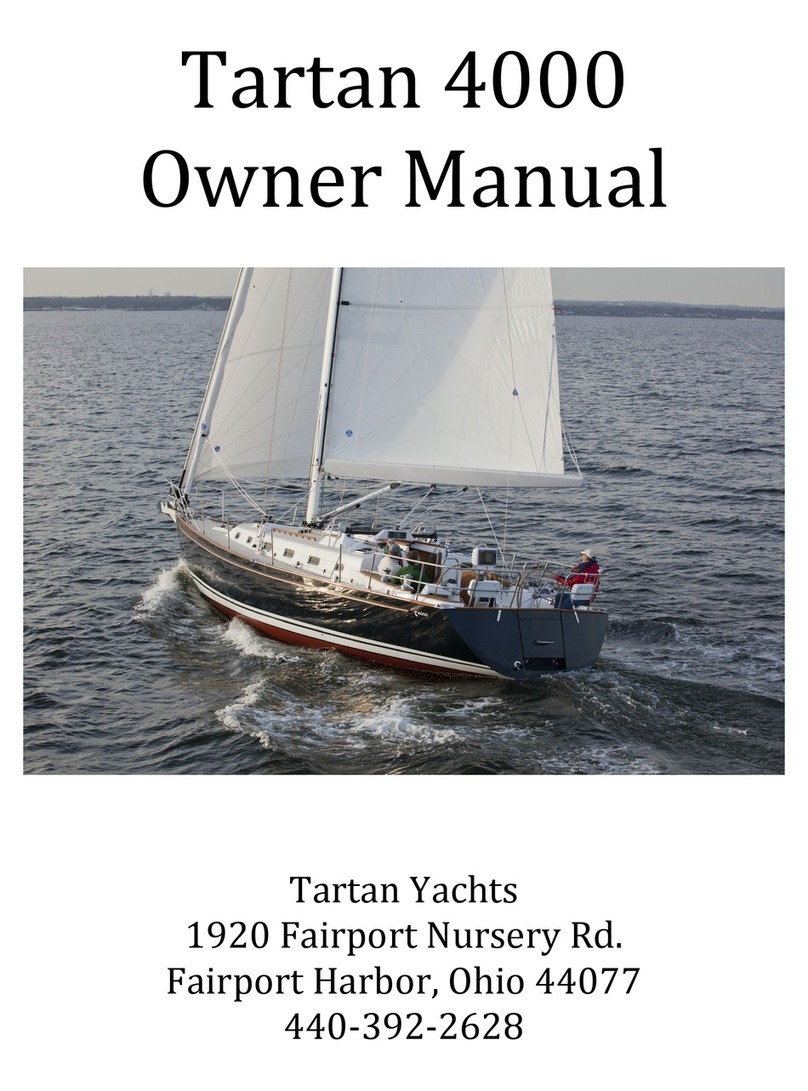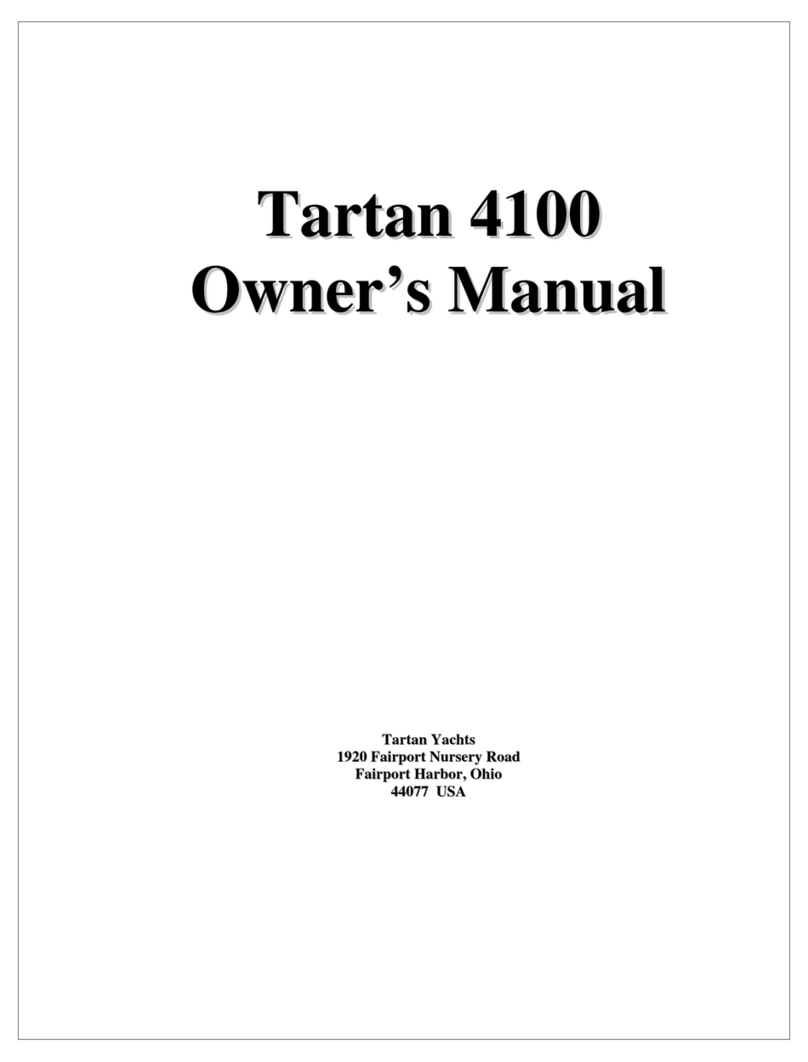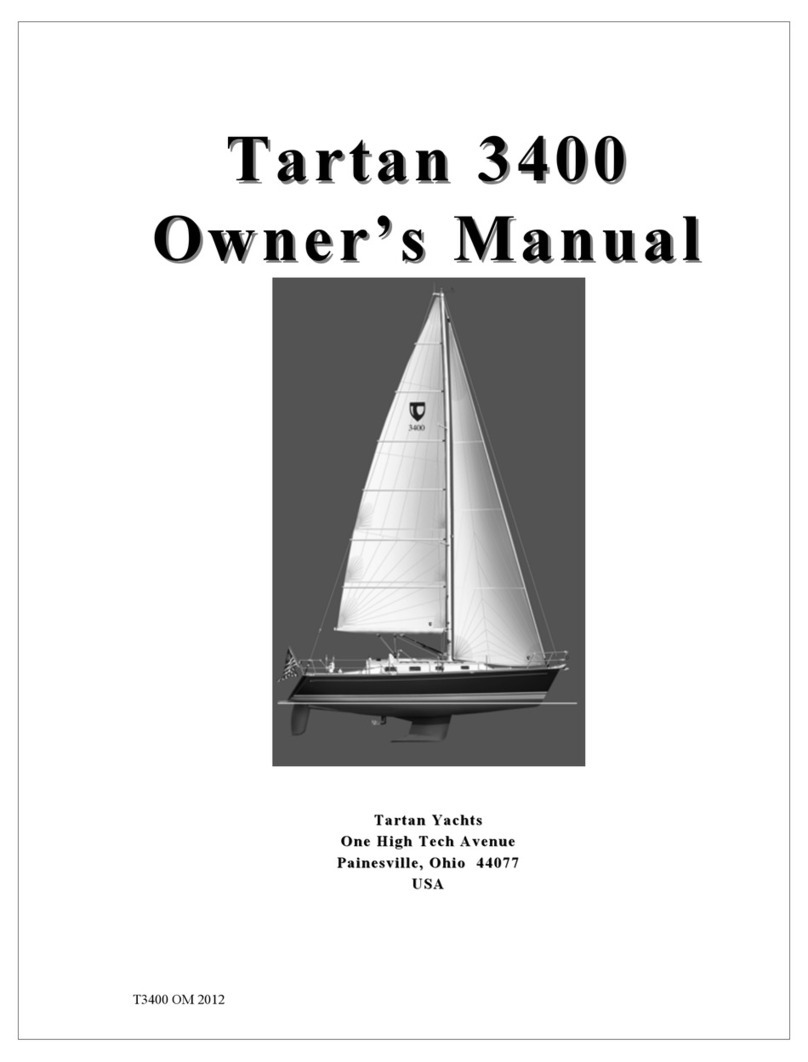
Tartan 3500 Owner’s Manual
T3500OM
4
1.0 INTRODUCTION
Congratulations of becoming an owner of a new Tartan yacht. Tartan Yachts is
pleased to have you join our "Clan" and wish you the best in your sailing
endeavors.
This owner's manual has been prepared to provide you with detailed information
for the use and maintenance of your yacht. Enclosed you will find not only items
pertaining to Tartan manufactured products, but it also includes individual
instruction manuals and warranty registration cards from suppliers of major
equipment items used in the construction of your vessel.
It is Tartan's policy to continually improve and modify our products. Thus you
may find that your Tartan has different details or equipment than shown in this
manual. In each case, the new details or equipment have been carefully
evaluated to determine that it is consistent with the Tartan commitment to
excellence.
Your Tartan is identified by a 12 character Hull Identification Number(HIN)
molded into the gelcoat at the top right comer of the transom in accordance with
U.S. Coast Guard Regulations. Please identify your model and hull number when
contacting your dealer or Tartan Yachts for any reason.
•
The first three letters of the HIN identify the builder with
code TAR
•
The next two identify the model (e.g. 46)
•
The next three numbers are the hull number of your
yacht(e.g. 145)
•
The last four characters identify the month and year of
manufacture (e.g.: E596 reads E as month and year
manufactured (May = E, 5 = 95), 96 as model year design.
It is the responsibility of your Tartan Dealer to commission your yacht in
accordance with the Tartan Yachts' Commissioning Procedure, a copy which is
included in this manual. Please be sure that the
Commissioning Check List
is
completed by your dealer and returned to Tartan, as failure to do so may
invalidate your warranty.
Tartan is striving to provide you with the most complete and detailed owner's
manual. Your Tartan dealer or the Tartan Yachts Customer Service Department
would be pleased to provide you with any information you require that is not in
the manual.
































